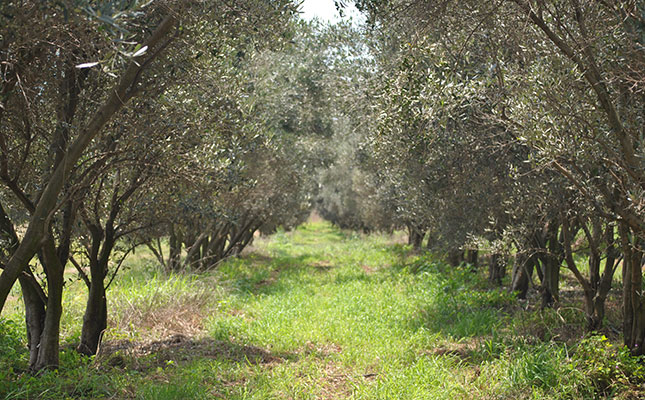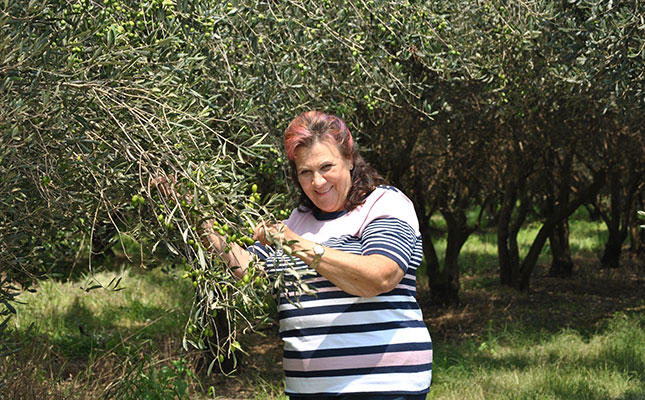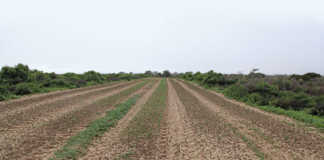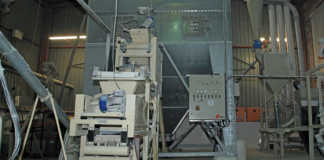
Photo: Supplied
What started out as a small trial with just 10 olive trees almost 20 years ago has grown into a productive olive business for Hettie du Toit.
She and her husband, Frans, who died in 2009, first decided to experiment with olives on their 26ha plot in Randfontein, Gauteng, as their vegetable farming operation was plagued by ongoing theft.
One of the main reasons they chose olives in a region not usually associated with this crop was that olives need to be processed before consumption; the fruit hanging on the tree is effectively inedible and therefore offers little temptation to potential thieves.
In 2004, the couple started with 10 olive trees to see if these would cope with the climate. Once they were satisfied that the trees had become well established, they ordered 5 000 more and launched their olive oil and table olive business, Orion Olives. Today, the orchard contains approximately 10 000 olive trees of different varieties.
Extra-virgin olive oil is produced from Frantoio, Coratina, Favalosa (FS17) and Leccino olives, and table olive varieties include Kalamata, Mission, Manzanilla and Beroni.

Trial and error
In the beginning, the trees were planted at a spacing of 3m x 5m. This turned out to be too dense, and subsequent trees were planted at a spacing of 6m x 5m.
Considerable research went into choosing the most suitable cultivars for the area, says Du Toit.
“I didn’t have a background in agriculture and had to learn as I went along. I received valuable advice from the nursery where I bought the trees.”
One of the best cultivars has been Favalosa.
“It’s a smaller tree, almost like a dwarf type that needs less pruning, and the fruit
has a very high oil content of up to 22%. It’s also an early-ripening variety, with the first fruit ripening from the middle of February. Coratina olives, by contrast, take until late July to ripen.”
Falling in the summer rainfall region, Gauteng’s mild climate is well-suited for the cultivation of olives, says Du Toit.
Approximately 20% of the orchard is planted to table olive varieties, but the main focus is on olive oil production.
This requires cold winters, but the temperature should not drop below -4˚C. Fortunately, this does not happen in the region. Larger trees, notes Du Toit, can survive temperatures of -6˚C. The ideal maximum temperature for olive production is between 22˚C and 30˚C.
Du Toit uses drip irrigation. Olive trees have a high water requirement in summer, and ideally should be planted in well-drained soil.
The soil should have a pH of between 5 and 6, a level that is achieved by adding lime. Du Toit also arranges for a soil analysis to ascertain the nutrients that are required.
“Trees need to be provided with enough nitrogen, phosphates, calcium, magnesium and micro-elements on a regular basis,” she says.
She also applies boron to the soil five to six times a year to ensure good fruit set, and for extra fertilisation adds manure and the pulp left over after the oil extraction process.
According to Du Toit, an olive tree can be planted in less fertile soil, as the root system is only between 50cm and 80cm deep. Correct nutrition will ensure optimal growth.
Du Toit uses Calmabon foliar spray, which contains calcium, magnesium and boron, to help ensure flowering and the production of larger fruit. Yields vary year by year, as olive trees are alternate-bearing.
However, Du Toit achieves an average total yield of between 30t and 40t per year.
There are also many younger trees in the orchard that have not yet reached their full potential. As these come into full bearing, production will increase.
Du Toit follows a preventative spraying programme to control pests and diseases, but says that she experiences fewer problems with these than olive growers do in some other production regions.
A pest that can nevertheless pose a significant threat in the orchard is the olive lace bug. If left untreated, it can cause a great deal of harm, including severe leaf damage to the trees. This can result in loss of vigour, yellowing of leaves and leaf fall, and can reduce fruit yield for up to two years.
Picked by hand
Harvesting is normally carried out from the beginning of March until the end of May, with the olives being picked by hand.
At the end of the season, the workers remove all the fruit from the trees. (Du Toit does not use a tree shaker to harvest the crop, as this poses a danger of uprooting the trees.)
The best-quality oil is obtained from half-ripe to ripe fruit pressed within 48 hours of picking.
She employs up to 70 seasonal workers during the harvest season, and eight permanent workers on the farm.
Although Du Toit could expand her operation, she is satisfied with its current size, as it is manageable.
One of her greatest challenges in recent years has been load-shedding during harvest time. She does not have a generator that can power the olive oil press, and prolonged electrcity outages, which delay the processing of the olives, can affect the quality of the oil produced.
All of her table olives and olive oil are sold locally, and Du Toit supplies a number of restaurants and supermarkets. She also sells her products directly, with most of her customers being in the Randfontein area.
Du Toit advises prospective olive producers to have the soil analysed to establish which nutrients should be supplemented prior to planting.
“Also ensure that your irrigation system is set up and running before you start planting trees, and that the orchard is planted in the right direction to minimise wind damage to the trees and the crop,” she adds.
Email Hettie du Toit at [email protected].











